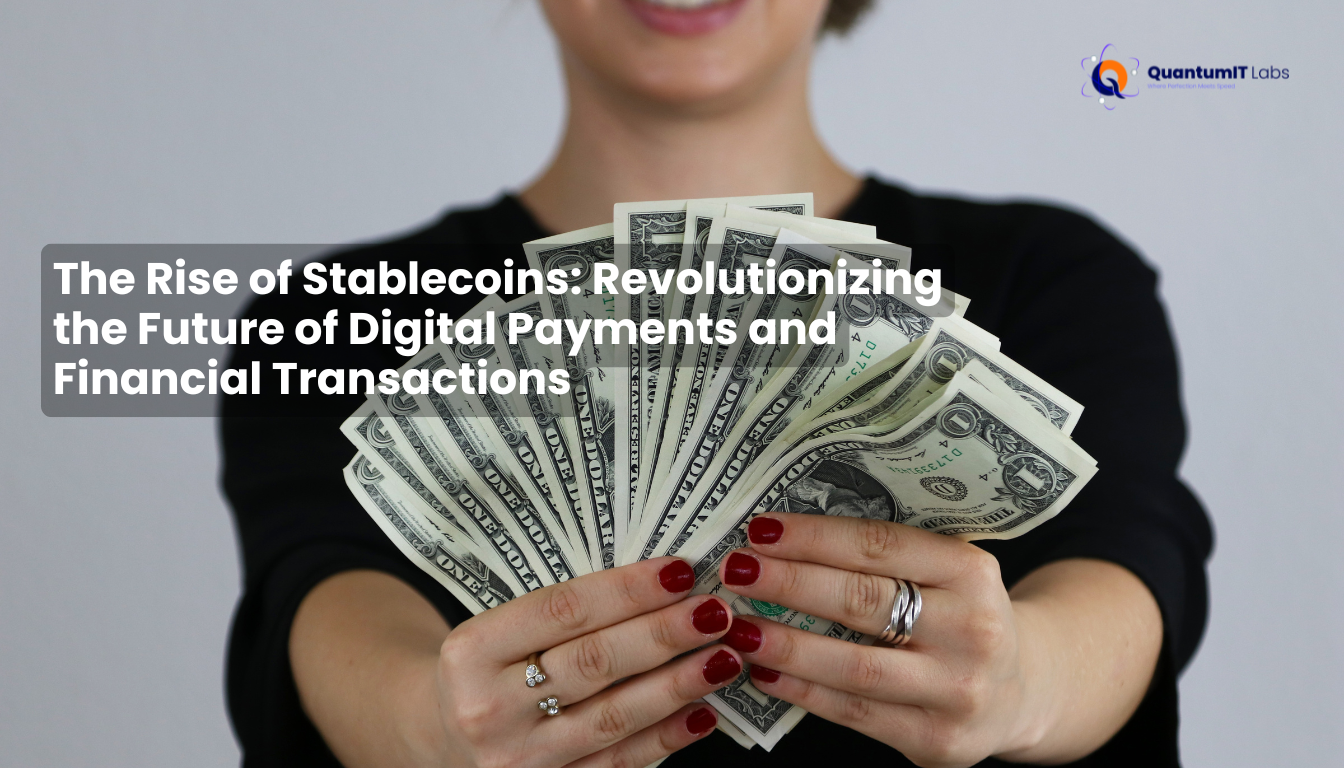Introduction
The world of cryptocurrency is constantly evolving, and one of the most significant developments in recent years is the rise of stablecoins. Unlike traditional cryptocurrencies such as Bitcoin and Ethereum, stablecoins are pegged to real-world assets like the U.S. dollar or gold, making them less volatile and more suited for everyday transactions. In this blog, we’ll explore the rise of stablecoins, their potential to transform digital payments, and their role in the future of finance.
What are Stablecoins?
Stablecoins are digital assets designed to maintain a stable value by being tied to a reserve asset, such as a national currency or commodity. They combine the benefits of digital currencies—such as fast transactions and borderless payments—with the stability of traditional assets.
Why Are Stablecoins Gaining Popularity?
- Reduced Volatility: Traditional cryptocurrencies are known for their price fluctuations, making them impractical for regular payments. Stablecoins, on the other hand, provide a predictable value, making them ideal for transactions.
- Faster Transactions: Stablecoins enable faster and cheaper cross-border payments compared to traditional financial systems, bypassing intermediaries and reducing transaction fees.
- Financial Inclusion: Stablecoins are helping people in underbanked regions gain access to financial services. With just an internet connection, individuals can send, receive, and store stablecoins, bypassing the need for traditional banks.
- Integration into Traditional Finance: Stablecoins are becoming increasingly integrated into traditional finance, with partnerships emerging between banks, payment providers, and blockchain platforms.
Types of Stablecoins:
- Fiat-Collateralized Stablecoins: These are backed by a reserve of fiat currency (e.g., USD), with 1:1 backing. Examples include Tether (USDT) and USD Coin (USDC).
- Crypto-Collateralized Stablecoins: These are backed by other cryptocurrencies and use smart contracts to maintain their value. Examples include Dai (DAI).
- Algorithmic Stablecoins: These are not backed by any collateral but instead rely on algorithms to adjust supply and demand to maintain stability. An example is Ampleforth (AMPL).
The Role of Stablecoins in the Future of Finance
Stablecoins are not just a solution for digital payments; they are reshaping the broader financial landscape. Here’s how they’re playing a role in the future of finance:
- Decentralized Finance (DeFi): Stablecoins are a cornerstone of the DeFi ecosystem, allowing users to lend, borrow, and trade without intermediaries.
- Cross-Border Payments: Stablecoins are making cross-border payments faster, cheaper, and more efficient by removing traditional banking barriers.
- Digital Asset Custody: Financial institutions are starting to offer digital asset custody services, and stablecoins are becoming key in this sector.
Regulatory Considerations
As stablecoins continue to rise in popularity, regulatory bodies are stepping in to ensure they are used responsibly. Discussions around regulation, transparency, and consumer protection are ongoing, and the future of stablecoins will largely depend on how governments choose to regulate them.
Conclusion
The rise of stablecoins is an exciting development in the world of digital finance. With their ability to provide stability in an otherwise volatile market, stablecoins are well-positioned to revolutionize digital payments, cross-border transactions, and the overall financial ecosystem. As their adoption grows and regulatory frameworks evolve, the impact of stablecoins on global finance will continue to unfold.
Interested in learning more about how stablecoins can enhance your financial transactions or digital payment solutions? Contact us today to explore how we can help you integrate stablecoin solutions into your business strategy and stay ahead of the curve in digital finance!

